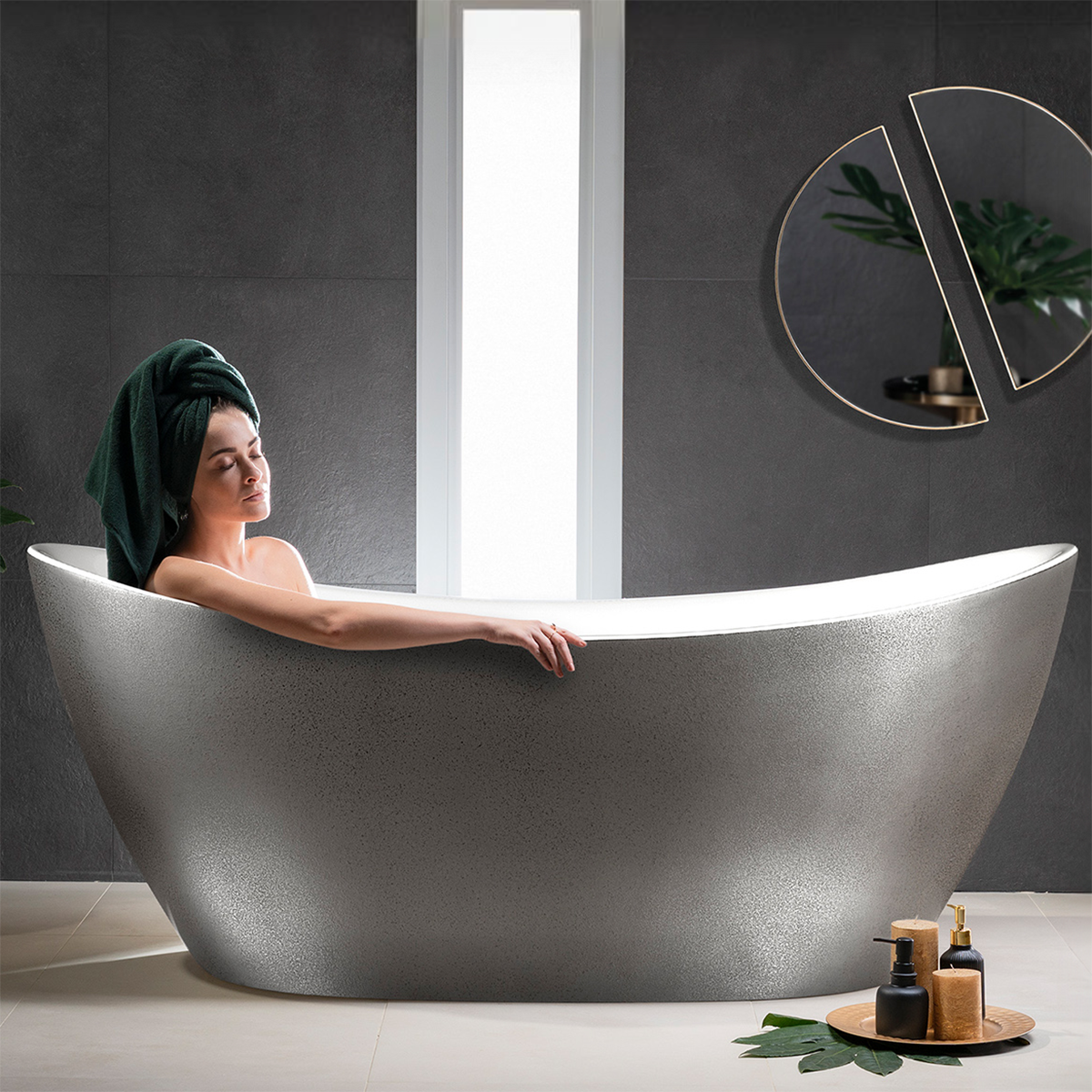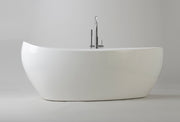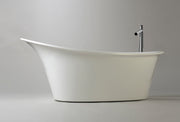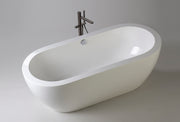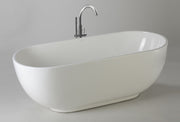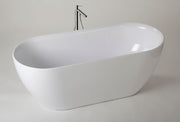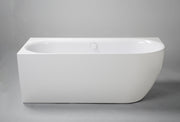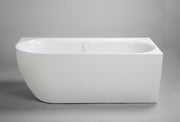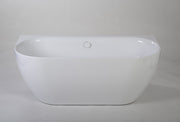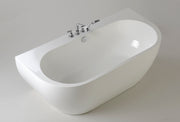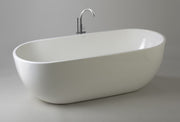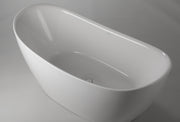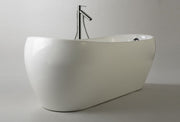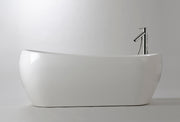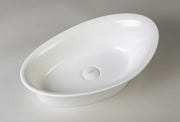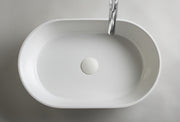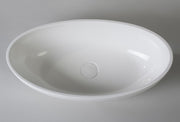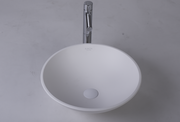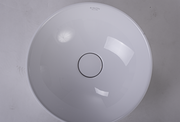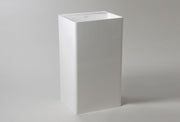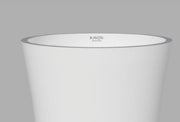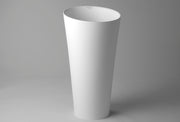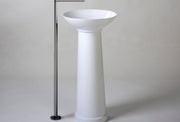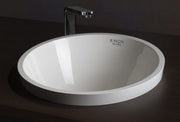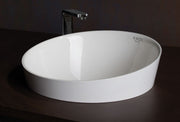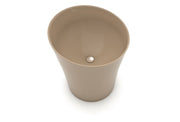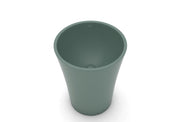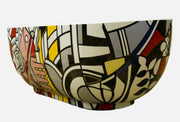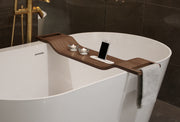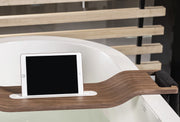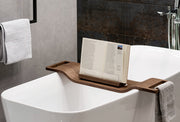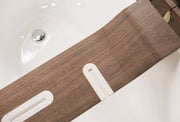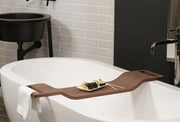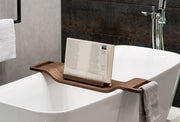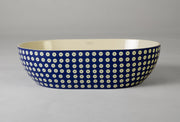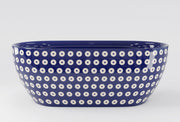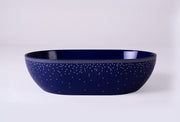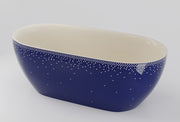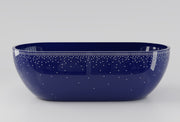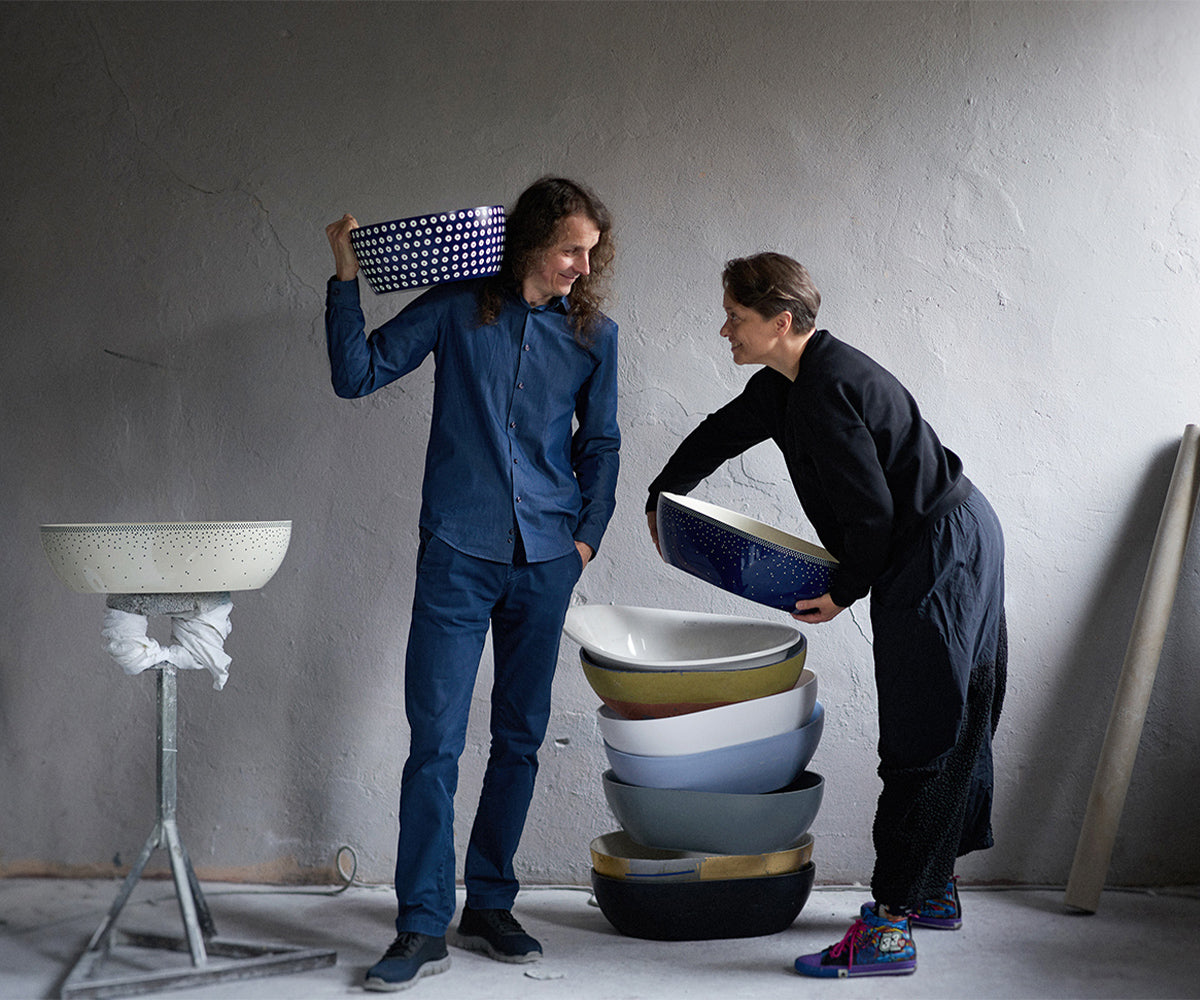The world of interior design is increasingly turning towards what is durable, thoughtful, and rooted in history. Traditional forms and artisanal inspirations are once again finding their way into bathrooms—this time with a modern twist. Designers are increasingly embracing classic proportions, natural materials, and timeless aesthetics, reinterpreting them with the help of contemporary technologies.
This isn't just a trend, but a conscious direction for design development—based on quality, detail, and a balanced approach to space. What place do freestanding bathtubs or small countertop washbasins occupy in this concept? And what does "modern craftsmanship" really mean in bathroom design today?
Get the answers – and see how tradition can shape the future, join us!
Tradition as a source of contemporary design ideas
Although contemporary interiors are often associated with simple forms and digital precision, they are increasingly inspired by the past. Designers today are drawing on motifs familiar from craftsmanship—those that convey history, emotion, and a sense of material connection. This isn't about copying past styles, but rather creatively transforming them—reinterpreting them in the spirit of modernity. Take, for example, rounded water bowls, ceramic jugs, stone washtubs, or forged metal—elements familiar from centuries past, now finding new life. Their contemporary counterparts are meticulously crafted, crafted from advanced composite materials, yet still harken back to their original, artisanal forms.
"New generation" design, therefore, doesn't distance itself from heritage—on the contrary, it respectfully references it, creating products that combine a classic soul with future-ready functionality. This is why bathrooms inspired by such inspiration possess something unique—they are not only beautiful but also full of meaning.
Bolesławiec tradition in a modern form – an example of cooperation between two factories
The BlueDot project is a unique example of how traditional patterns can inspire contemporary bathroom design – the result of creative cooperation between two Polish brands: Manufaktura in Bolesławiec and RAVON Manufactura .
At the intersection of ceramic craftsmanship and modern composite technologies, a line of bathtubs and sinks inspired by the famous Bolesławiec dot was created. The decorative design was created by Magdalena Gazur, chief designer at Manufaktura in Bolesławiec, and its implementation in contemporary forms was overseen by Jarosław Niewadzi, owner of the RAVON brand.
Patterns like PolkaDot and Serenity , though deeply rooted in folk tradition, have been transformed into a new dimension by being incorporated into the composite surfaces of bathroom products. This required numerous trials, as RAVON material behaves differently from traditional ceramics. However, it was precisely this courageous experimentation that led to the creation of a collection that not only preserves the spirit of Bolesławiec's heritage but also gives it a completely new, contemporary identity.
The BlueDot project is a new take on craftsmanship – reinterpreted yet true to its history. It's a perfect example of how consciously using traditional patterns can result in designs that transcend fashion, creating value that lasts longer than seasonal trends.
Freestanding bathtub – a form that has survived the centuries
In the world of interior design, few forms boast such aesthetic continuity as the freestanding bathtub . From historic tubs used in aristocratic homes, through enameled models of the early 20th century, to contemporary designs crafted from advanced materials, the idea of the bathtub as a standalone, exposed piece of furniture has endured and gained new meaning.
A contemporary freestanding bathtub is the focal point of a bathroom design, a consciously chosen element that enhances the interior's character. Its presence gives the space breath, rhythm, and proportion, acting as a bridge between applied art and the daily practice of bathing.
In RAVON's offerings, this approach translates into designs that combine ergonomics and aesthetics with durable materials. The bathtubs are manufactured from, among other materials, QualTec composite, which provides exceptional resistance to mechanical damage and scratches while maintaining water temperature for extended periods. This material is designed with user comfort and a refined form in mind. Furthermore, thanks to extensive color and texture customization options, each bathtub can be tailored to individual aesthetic preferences, regardless of the interior design context.
Small countertop washbasin - small form, big story
Although modest in size, the small countertop washbasin is one of the most interesting examples of modern design drawing on traditional forms of utility. Contemporary design doesn't so much imitate them as reinterpret them, creating compact yet remarkably expressive forms that command attention.
In modern bathrooms—especially those with limited space or in guest areas—this type of sink serves a dual purpose: practical and decorative. Its countertop design allows for easy installation on a variety of surfaces, and the ability to choose from a variety of shapes, heights, and colors allows for complete design freedom.
RAVON offers small countertop washbasins designed with exceptional attention to detail. Made from materials such as Marmonit and PureStone, they are highly resistant to everyday use and boast exceptional surface aesthetics – from uniformly smooth to subtly textured. Importantly, this segment also offers full color customization, allowing even a small element to play a significant role in the overall interior design.
A small countertop washbasin , although subtle in scale, can become a defining element of the space's style – especially when it combines elegance, craftsmanship and the history of form embedded in its shape.
Materials with soul – modern technology inspired by craftsmanship
In traditional craftsmanship, the material was no accident – it was consciously chosen for its durability, tactile properties, and aesthetic appeal. Today, although technological processes have advanced significantly, the idea remains the same. At RAVON, we understand this principle perfectly, which is why the selection of raw materials for the production of bathtubs and sinks is a coherent design philosophy.
QualTec – comfort in a modern version
This proprietary composite combines features that previously required separate materials: durability, a pleasant-to-the-touch surface, and high resistance to damage. Thanks to its low thermal conductivity, QualTec bathtubs maintain water temperature for a long time, resulting in comfortable bathing and greater energy efficiency. It's the perfect choice for those seeking a balance between technology and sensory experience.
Marmonit – a stone-inspired structure
Made from polyester resins and natural minerals, Marmonit imitates the appearance of polished marble while retaining performance properties unmatched by traditional stone. High scratch resistance and ease of cleaning make it a material with dual value: aesthetic and practical. Its slightly heterogeneous texture gives each surface depth and unique character.
PureStone – the elegance of nature in a modern form
Inspired by the textures of natural stones, it combines organic beauty with modern performance. PureStone is resistant to chemicals and temperatures, yet velvety to the touch – these qualities make it a popular choice for premium products. It's particularly well-suited for small, countertop sinks, where both detail and durability are essential.
PuroMetal – a classic with a metallic finish
The PuroMetal collection embraces the aesthetic of metal – finishes like Antique, Brushed, and Glossy evoke classic jewelry techniques and handcrafted craftsmanship. This collection is perfect for those who want to break the monotony of bathroom designs and introduce an element of artistic expression. Metallic accents on bathtubs or sinks pair perfectly with industrial, loft, and modernist spaces.
The past that shapes the future of design
Products created at the intersection of the past and the present define a new standard in interior design. They create spaces that not only meet everyday needs but also emphasize the mature, well-thought-out character of the entire interior. A freestanding bathtub or a small countertop washbasin are now becoming not only functional furnishings but also a thoughtful form of aesthetic expression—one that carries value far beyond current trends.
In this context, it's worth noting that it's precisely this conscious drawing on classic inspirations—combined with modern material solutions—that defines the future of good design. Design that doesn't seek attention but builds a lasting, cohesive identity for a space.

